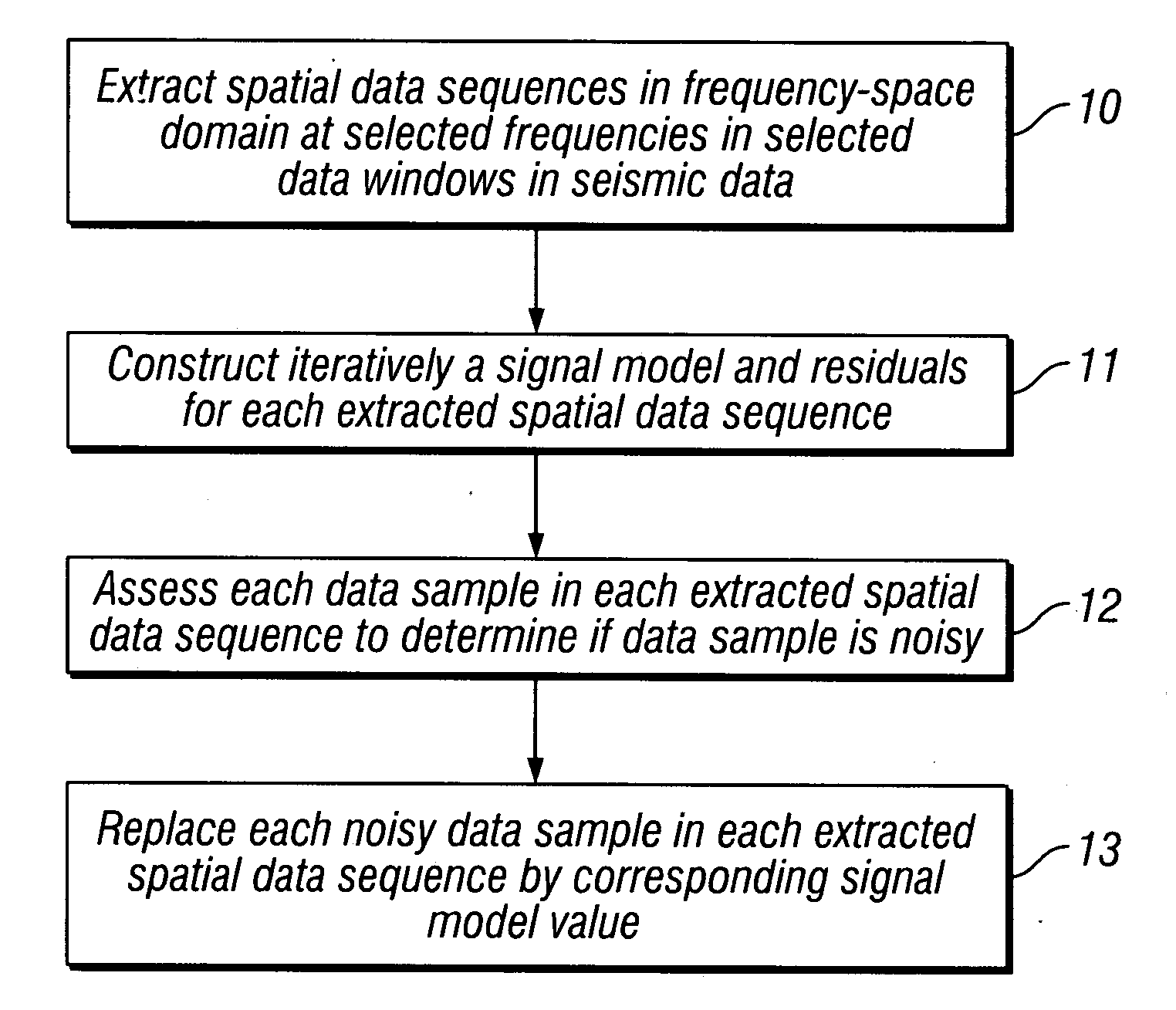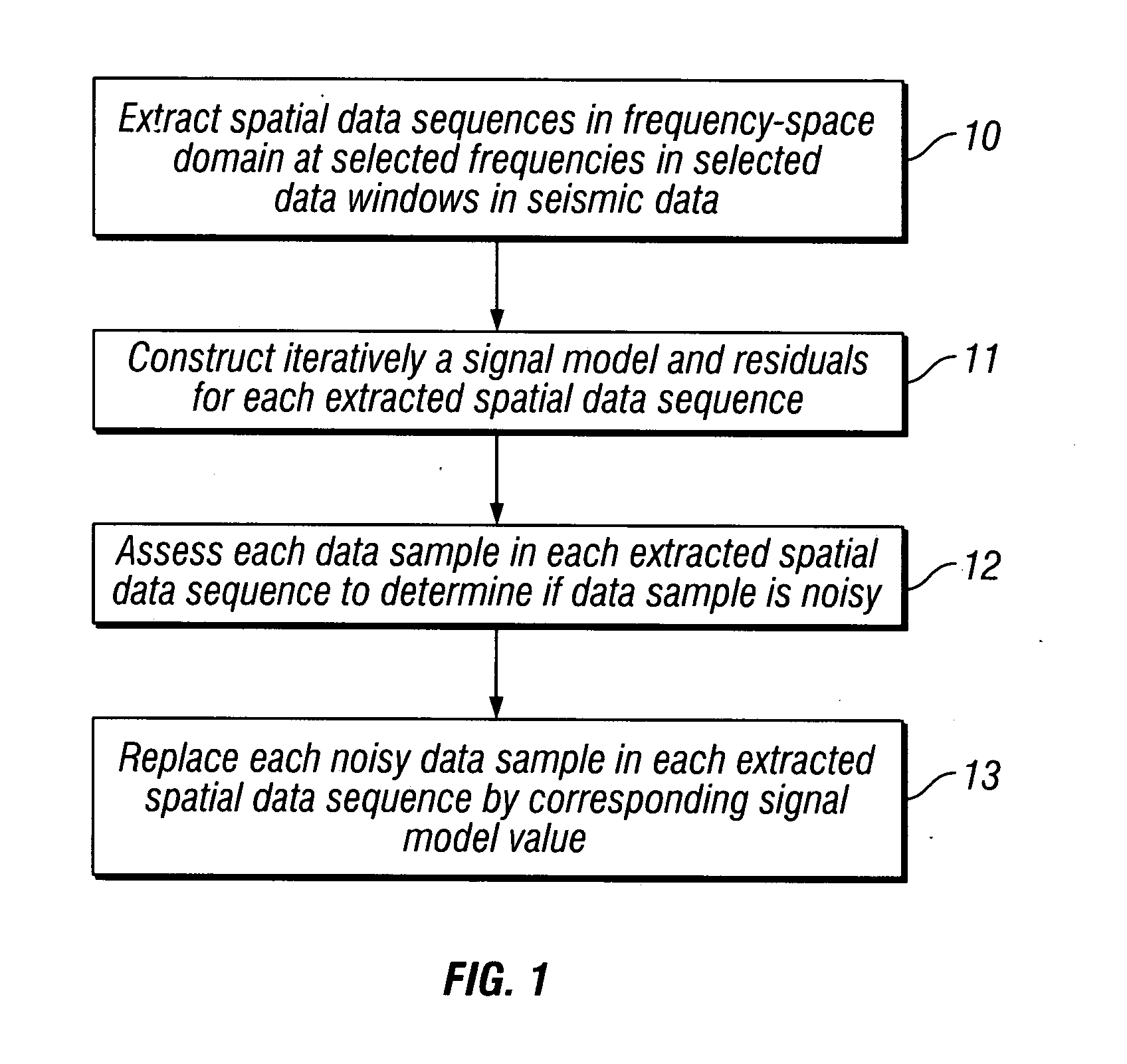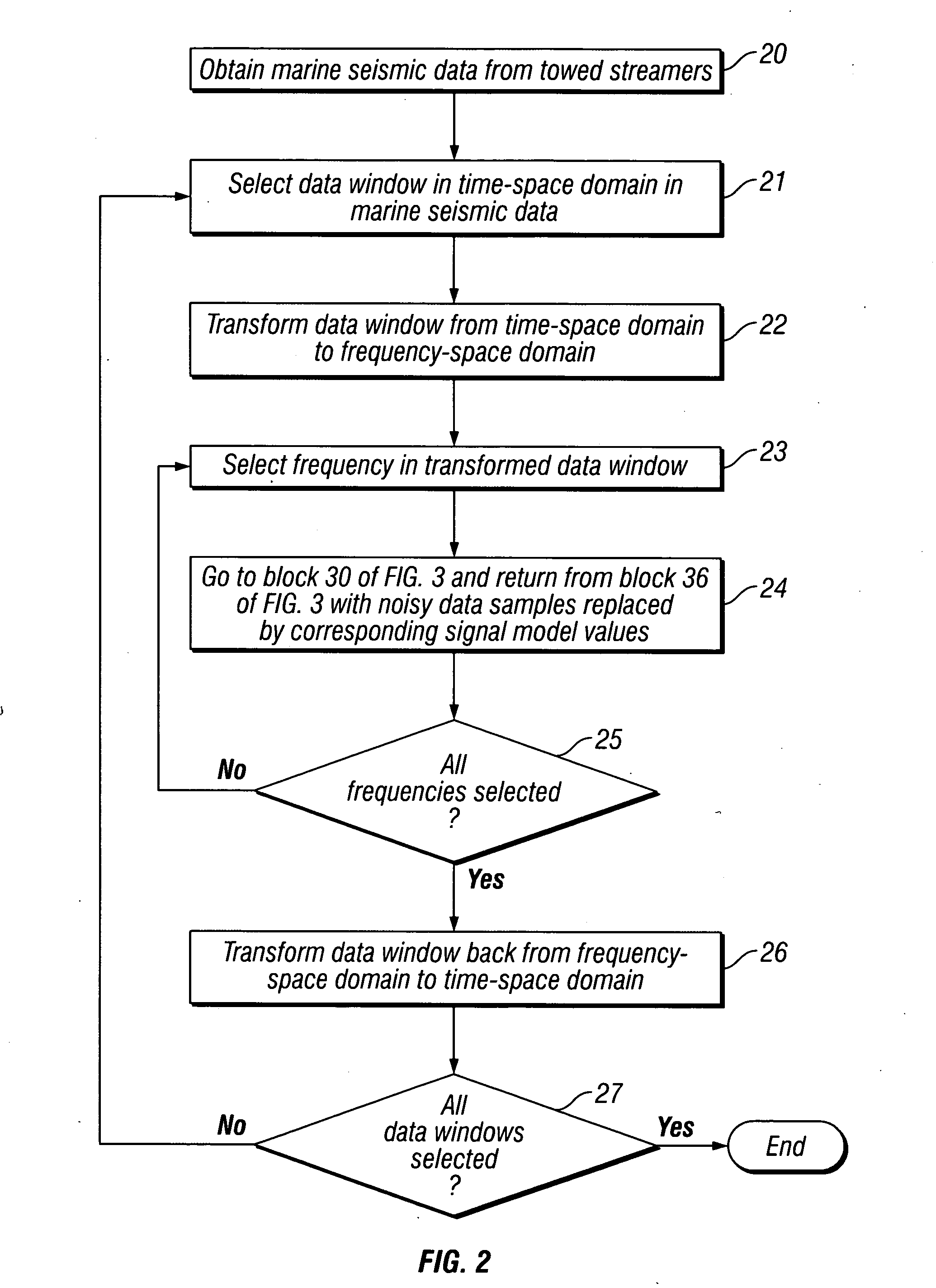Method for swell noise detection and attenuation in marine seismic surveys
a technology of marine seismic and attenuation, applied in the field of geophysical prospecting, can solve the problems of swell noise, swell noise, and different acoustic impedance at the interface, and achieve the effect of reducing the noise of swells and nois
- Summary
- Abstract
- Description
- Claims
- Application Information
AI Technical Summary
Problems solved by technology
Method used
Image
Examples
Embodiment Construction
[0022]Conventional techniques to attenuate swell noise typically use a two-step process of detection and correction. Initially, the frequency-space (f-x) amplitude spectrum of the data is computed. Then, in the first step, detection of noisy traces, all spectral values at a given frequency that exceed a selected threshold value are considered to be noise. Then, in the second step, correction of noisy traces, the detected noisy traces are interpolated by applying a prediction / projection error filter (PEF). Finally, the corrected amplitude spectrum is transformed back to the original time-space domain.
[0023]The threshold value in the detection step is usually computed as:
Thrs=αŜ. (1)
The quantity Ŝ is a statistical measure, such as the median or the RMS (root mean square) value, computed from the input amplitude spectrum samples, and α is a positive factor, referred to as the threshold factor. The threshold factor α is a user-controlled parameter that quantifies the “harshness” of the...
PUM
 Login to View More
Login to View More Abstract
Description
Claims
Application Information
 Login to View More
Login to View More - R&D
- Intellectual Property
- Life Sciences
- Materials
- Tech Scout
- Unparalleled Data Quality
- Higher Quality Content
- 60% Fewer Hallucinations
Browse by: Latest US Patents, China's latest patents, Technical Efficacy Thesaurus, Application Domain, Technology Topic, Popular Technical Reports.
© 2025 PatSnap. All rights reserved.Legal|Privacy policy|Modern Slavery Act Transparency Statement|Sitemap|About US| Contact US: help@patsnap.com



